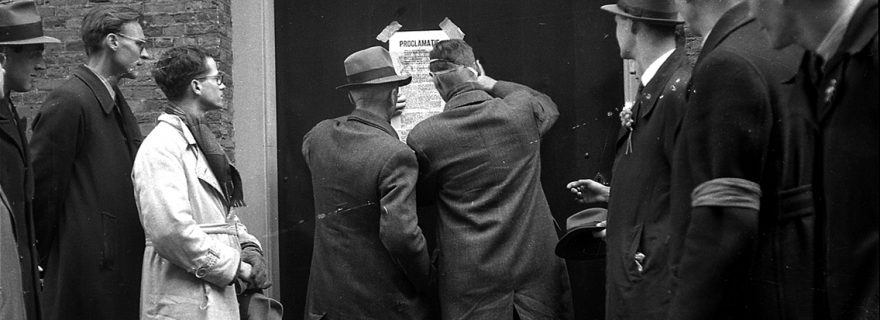Purging Leiden University after World War II
The end of WWII and the reopening of Leiden University meant the start of the purging of the university, aimed at removing all staff, professors and students from Leiden’s academic community that had sympathised with the Nazi oppressors.
The reopening of Leiden University after World War II was celebrated for four days, with commemorative services in the Hooglandse Kerk, a celebration in the Botanical Gardens, parties for alumni and students, and Queen Wilhelmina taking part in the cortège walking from the Academy Building to the Pieterskerk on 17 September 1945. The end of WWII and the reopening also meant the start of the purging of Leiden University, aimed at removing all staff, professors and students from Leiden’s academic community that had sympathised with the Nazi oppressors. This was a long, painstaking, well-documented process, which took over five years. The documents concerning the purging of Leiden University after WWII are kept as a separate (restricted) part of the University archives (ACK).
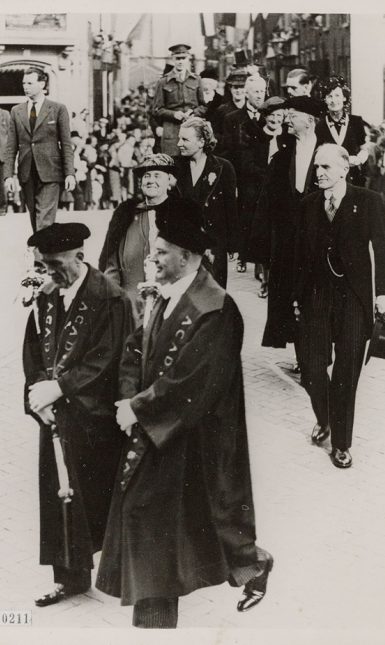

All over Europe, procedures were initiated for the trial of those that had sympathised with the Nazis during WWII. Also in the Netherlands legal measures were taken against collaborators, and in addition, certain professions were stripped of ‘undesirable elements’. These actions had already been prepared in London in January 1944. Committees of inquiry were set up for specific professional groups to determine who had ‘cooperated with the enemy’.
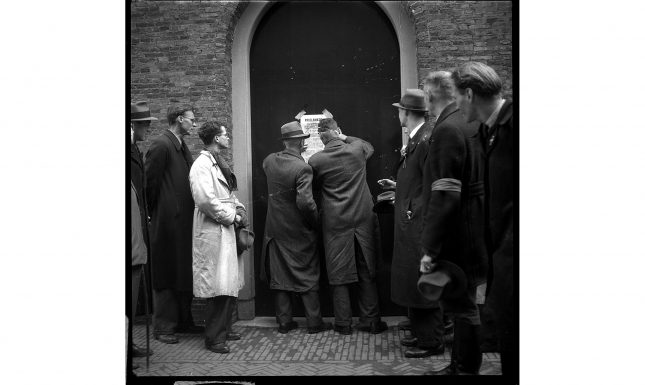

The central committee for the purging of Leiden University consisted of J.E. de Vos van Steenwijk (chair), A.F. Visser van IJzendoorn, F. Kleyn and P.J. Idenburg (secretary). This committee was supported by committees for pre-advice, one for scientific staff (chaired by Prof. C.J. van der Klaauw) and another for non-scientific staff (chaired by Prof. R. Kranenburg). Both Van der Klaauw and Kranenburg were removed from office by the Nazis in 1942 and held prisoner in the hostage camp Sint-Michielsgestel. After WWII they were reinstated at Leiden University. For students, the Ministry of Education, Culture and Science appointed a separated committee (chaired by J. Drion). The committees were largely staffed by Leiden professors. However, the committee for students also contained a pastor (A.J. Oudejans), an alumna (J. Nauta) and two student members (J.A. Noordijk and K.J. Cath). Secretary of all three committees was P. Cleveringa, great-nephew of Prof. R.P. Cleveringa who delivered his famous speech in 1940 against the removal of his Jewish colleague Prof. E.M. Meijers.
For the purging of professors, the committee for pre-advice relied on submitted complaints and objections about specific persons, and in addition, they also carried out their own research. Suspects were notified of the findings against them and were given the opportunity to respond, after which subsequently the central committee and the Military Authority were advised, resulting in one of the following penalties: dismissal, suspension (with or without pay) and reprimand (whether or not publicly). The archives hold the files of 38 investigated professors, containing documents concerning their pro- or anti-German attitude, copies of documents with information about those professors and their defence, correspondence between the different committees, and the decision of the Military Authority.
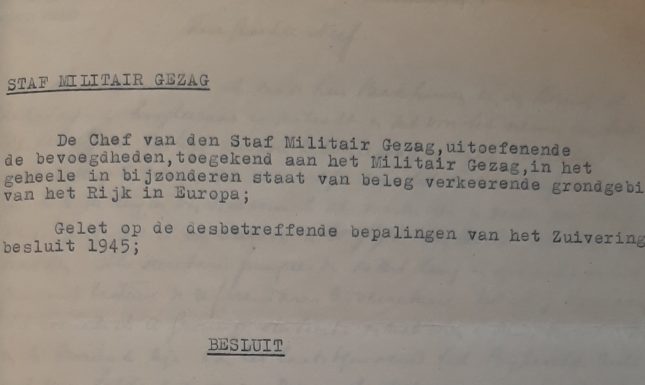

For students, there was a different procedure. At registration, every student had to fill in a form stating their attitude towards the German oppressors. For example, whether they had been a member of the SS, NSB, Jeugdstorm or any other national-socialist, fascist or German minded organisation. Whether a student had taken part in the Arbeitseinsatz, and if this was compulsory or voluntary. Another important question was whether a student had signed the ‘loyaliteitsverklaring’ of 10 March 1943, with which the student declared to be loyal to the Germans. Also, names of referees had to be given that could be consulted in case of further investigation. Penalties for students could range from a three-month exclusion to an exclusion of four or even more years. The archives contain the files of 205 students that were investigated and penalized. These files contain documents such as reports on the actions of the student (cooperation with the occupier or activities for the resistance), reports of interviews, completed forms with information about the student in question, statements by or about the student and copies of convictions.
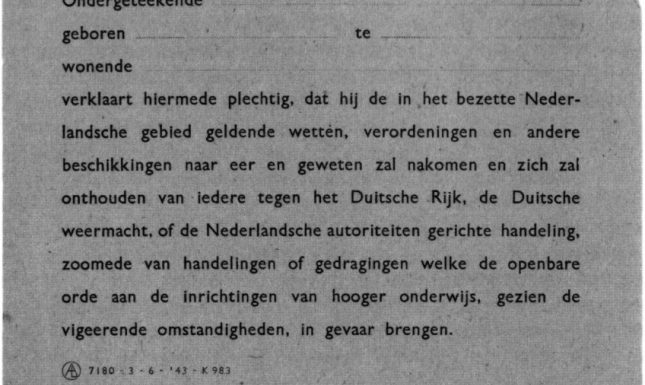

Access to Leiden University’s war archives is partly restricted due to privacy regulations. For information about Leiden University in wartime see Willem Otterspeer, Het Horzelnest. De Leidse Universiteit in oorlogstijd. Amsterdam 2019.


